From Digital Game AI to Smart City
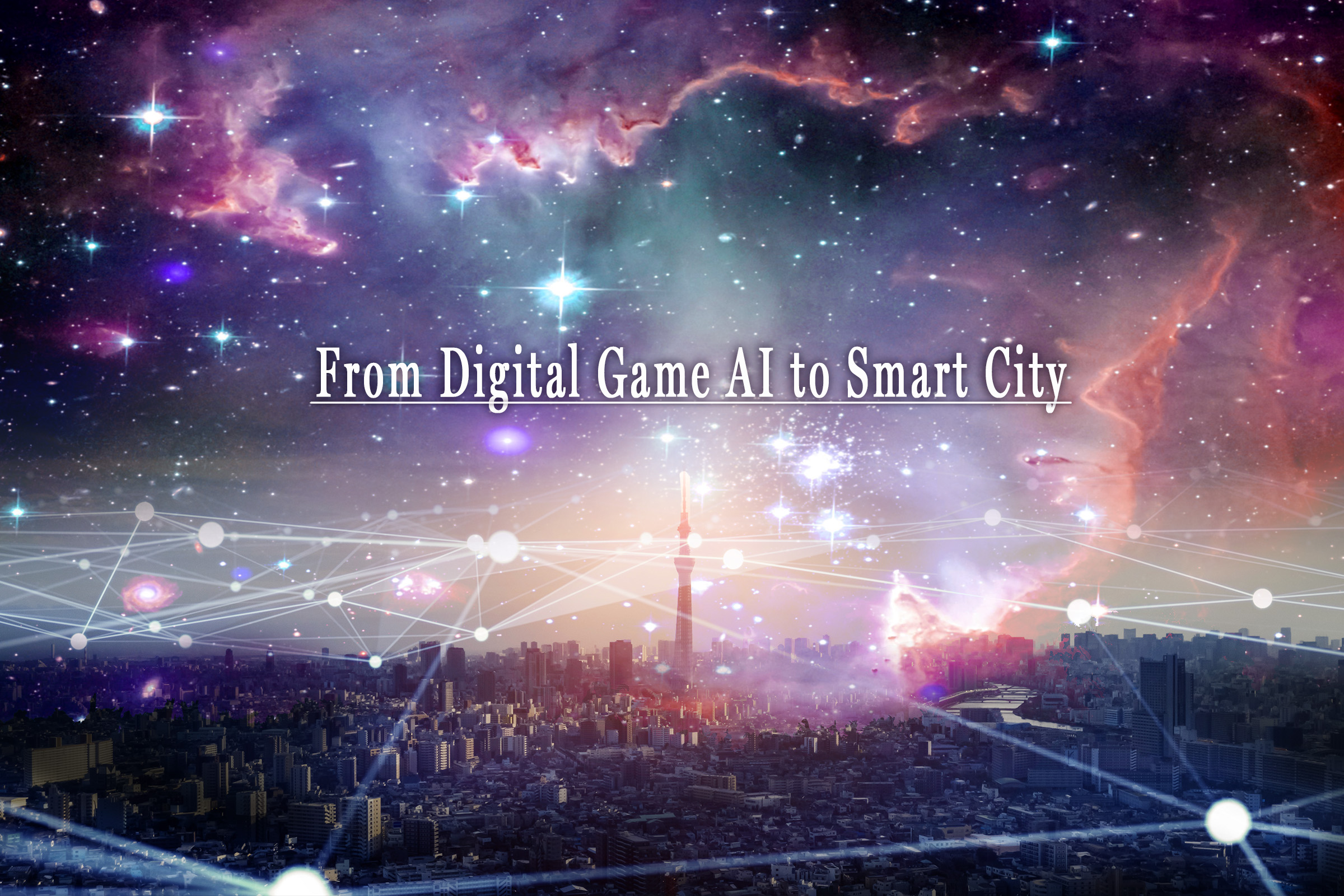
Artificial intelligence is widely applied in digital games: It can sense the entire situation of a game and affect the game by giving orders to characters or objects. This revolutionary technology can also be used for real-world applications. My idea is to harness AI technology to create a smart city or a huge AI system that is capable of protecting residents against natural disasters, for example, and making life better for them.
I have been researching and developing AI for digital games since 2004. Game AI means AI for board games such as chess, go and shogi, but my field of study for digital game AI is real-time interactive AI that is used in digital games. The technology is applied in such games as action, role-playing and online, generating responsive, adaptive and intelligent behaviors or dialogues between characters.
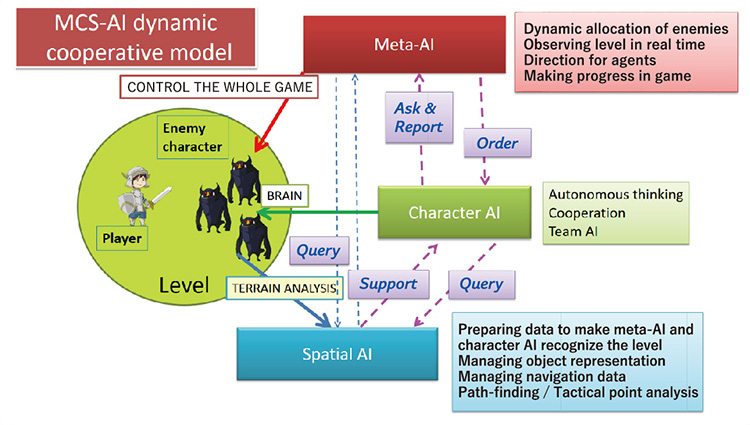
Image: Project Professor Youichiro Miyake
There are three kinds of AI in digital game AI: meta AI, character AI, and spatial AI. Character AI is the brain of a robot or agent. An AI that controls such characters, objects, and the game world is called meta AI. AI for space is called spatial AI. An autonomous distributed cooperative model connecting these three AIs is called the MCS-AI Dynamic Cooperative Model. My research involves utilizing this model as an architecture for a smart city to make the city itself AI.
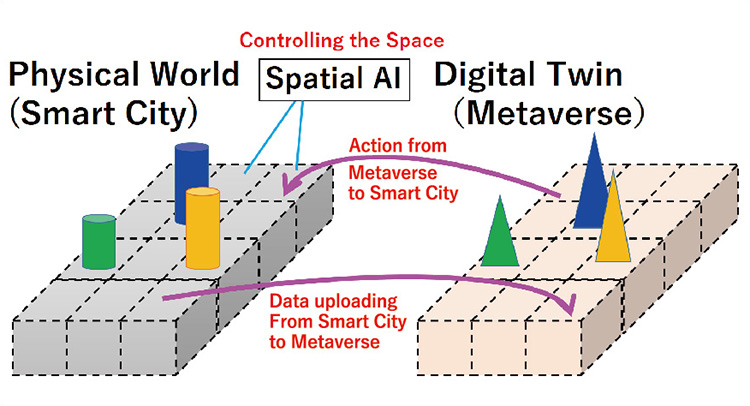
Image: Project Professor Youichiro Miyake
Spatial AI has its own domain space, recognizes the situation within the space, and orders and influences the agents and machines in the space. Spatial AI also transfers its own spatial information to the metaverse to link the smart city and the metaverse. A space that spatial AI controls is called a smart space. In a smart space, spatial AI transfers spatial information of the space to an agent and a robot dynamically, and they can behave intelligently in the space. A smart space is the minimum unit of a smart city. A smart city can be realized by connecting many smart spaces and covering the city with them.
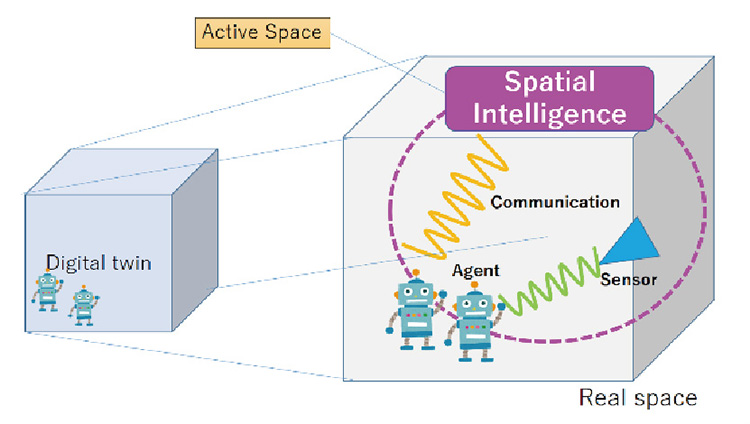
Image: Project Professor Youichiro Miyake
A smart city has its own AI and protects the city and its inhabitants against the external environment, such as the atmosphere and disasters. Smart city AI understands the internal state of city itself as a body and takes care of it. Smart city AI has a digital twin of the city and simulates and predicts the near future of the city by using a game engine. The reason why a smart city uses a game engine is that it is a useful tool to simulate the world and is the best visualization tool for storing a great deal of spatial data. Smart cities are not only necessary architecture for the Earth, but also for cities on the Moon and Mars in the future.
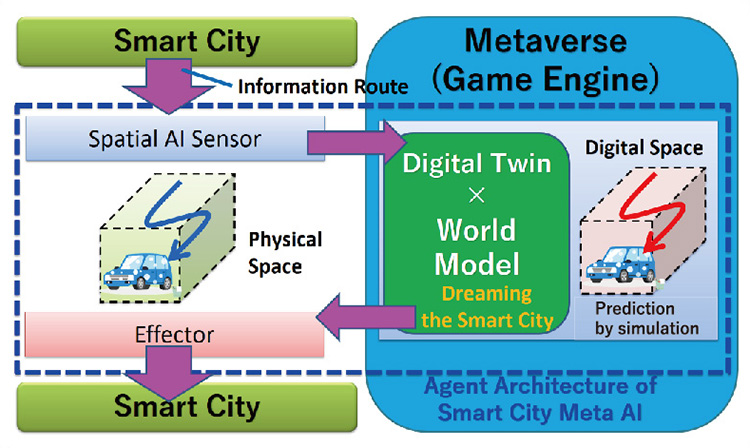
Image: Project Professor Youichiro Miyake

Text: Project Professor Youichiro Miyake
This article was originally published in the UTokyo-IIS Bulletin, an English-language magazine that introduces the activities of UTokyo-IIS.
> Publications


Comments
No comments yet.
Join by voting
How did you feel about the "Possible Future" depicted in this article? Vote on your expectations!
Please visit the laboratory website if you would like to learn more about this article.
Share